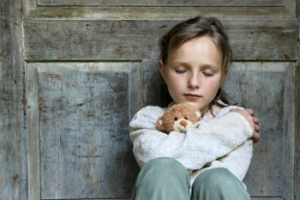A Childs Silent Cry: From Fear to Healing
The Story of Mia
Mia was only eight years old, but she carried a heavy burden on her small shoulders. She had always been told to be quiet, to stay in her room, and to never speak about the things that happened behind closed doors. It wasn’t that she didn’t want to talk; it was that she was too scared to. Scared of what would happen if she did. She didn’t understand why things were the way they were, but she knew one thing for sure – whispering secrets was safter than speaking truths.
At school, Mia would sit in the back of the classroom, hoping no one would notice the bruises she tried to hide under long sleeves. Her friends often asked why she was so quiet, but she never knew how to answer. How could she explain to them that the loud arguments at home made her feel like the world was about to explode? How could she tell them that her father’s hands sometimes left marks on her arms, or that her mother seemed lost in a cloud of sadness and fear? Mia didn’t have the words, and even if she did, she was too afraid to speak them.
Mia loved her mother dearly. She could see how much pain her mother was in, even though her mom tried to keep up a smile for her sake. Mia’s father had always been angry, and he would often take his anger out on her mother. Mia could hear the yelling, the harsh words, and sometimes, the sound of things breaking in the other room. It was confusing and terrifying. Mia wanted to help her mom, but there was nothing she could do. She felt powerless and scared – scared for herself, scared for her mom, and scared that the chaos in their home would never end.
Mia didn’t have many friends. She was shy and quiet, always sitting alone during recess, avoiding the other kids’ questions. She wasn’t allowed to invite anyone over to her house, even though she longed for a friend to visit. Mia watched her classmates play and laugh together, feeling a pang of loneliness that she couldn’t explain. She wished she could invite them to her home, to show them who she was beyond the bruises and silence, but she knew her father wouldn’t allow it. Her parents never wanted anyone to know what was really happening behind the closed doors of their home. the thought of anyone seeing the truth was terrifying.
The Hesitation to Tell
Mia often wished she could tell someone about the things she was experiencing, but she didn’t know who to trust. She feared that if she told her teacher, her friends, or even the school counselor, things would only get worse. What if her parents got angry with her? What if they told her that she was the reason everything was falling apart? She didn’t want to make her parents hate her, but she also didn’t want to keep secrets anymore.
And there was another feeling that gnawed at her heart: guilt. What if it was her fault? What if she hadn’t been so bad, so annoying, or so “difficult,” things wouldn’t have gotten out of control? Mia didn’t know how to stop blaming herself. The whispers inside her head made her question everything. Was it because of something she did or said? Maybe if she were quieter, things wouldn’t be so bad. She also worried about her mom. What if telling meant getting her dad in trouble? Would it make everything worse for her mom?
The Fear of The Process
One day, Mia’s teacher noticed the bruises on her arms. She asked if everything was okay, but Mia didn’t know how to answer. She was scared. What if her parents found out? What would happen if they took her away? Mia had heard whispers about foster care, about kids being separated from their families, and the thought of being alone terrified her more than anything. She was afraid that if she told, her dad would hurt her even more, or that her mom would be even sadder and more afraid than she already was.
But Mia’s teacher didn’t give up. She reached out to a trusted adult, and the process of reporting began. Mia was interviewed by a social worker, a kind woman who spoke gently and promised Mia that she was there to help. But even then, Mia felt her heart race with fear. She didn’t know if she could trust this stranger. Would this be the end of her family? Would it all fall apart? Mia didn’t know that reporting abuse meant a chance for safety – not just for her, but for her mother too. She felt like she was betraying her family, even though she knew something needed to change.
The Road to Healing
Reporting abuse is never easy, especially for a child. It’s a terrifying process, full of questions and uncertainty. Mia didn’t understand what was happening at first, but she was slowly introduced to resources that would help her along her healing journey. She met with a counselor who specialized in helping children recover from trauma. The counselor explained that it wasn’t Mia’s fault, that she wasn’t to blame for what had happened to her, or for the violence her mother had been enduring.
As Mia and her mother began their healing journey, they learned they were not alone. Support came from unexpected places. Mia was introduced to a children’s advocacy center where she met other kids who had experienced similar pain and fear. Over time, Mia began to understand that healing was a process, but it was a process that was possible. Her mom also started attending support groups for domestic violence survivors, where she began to find her own voice and strength.
For Mia, it wasn’t easy to accept that things had to change. But she learned about her rights, about safe spaces, and about the people who cared for her and wanted to help her rebuild her life. She started seeing her mother get stronger, and that gave her hope.
For Mia, and for many children like her, the first step is always the hardest: reaching out for help. But there are people who will listen, who will believe, and who will ensure that the child’s voice is heard. Mia learned that she was not alone in her suffering. There was an entire network of support waiting to help her heal – and there was hope for her mother too.


